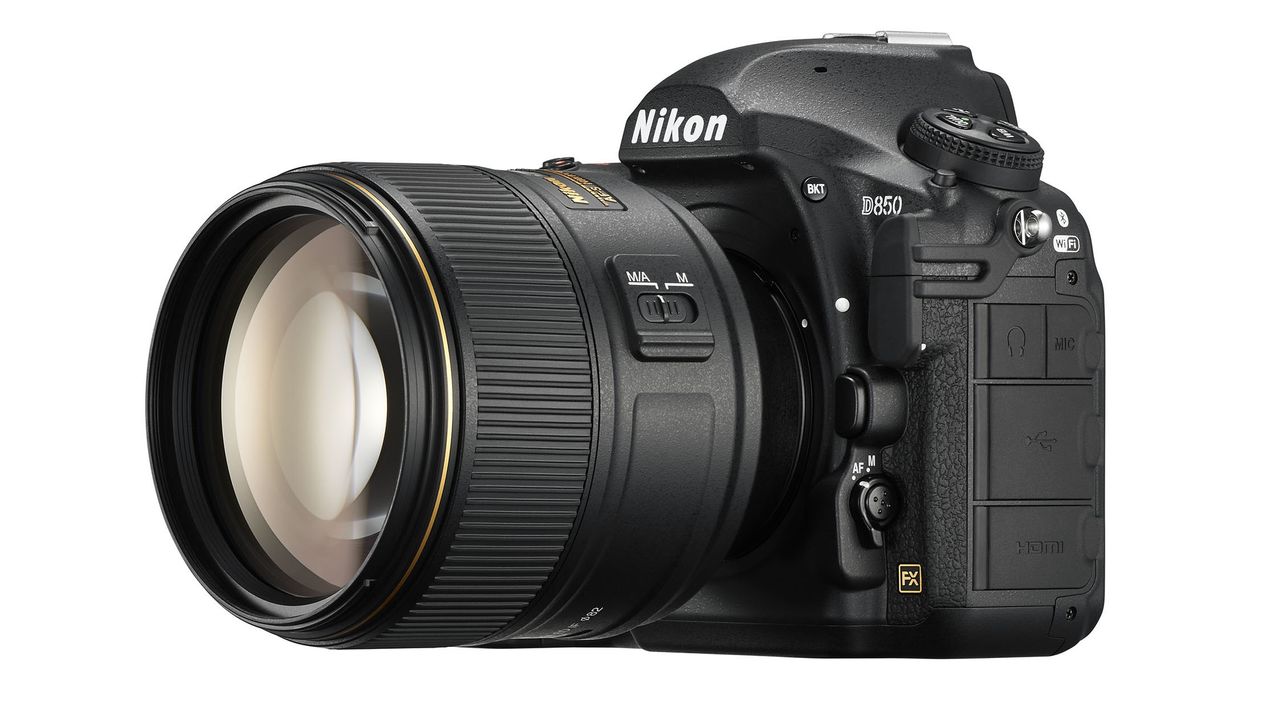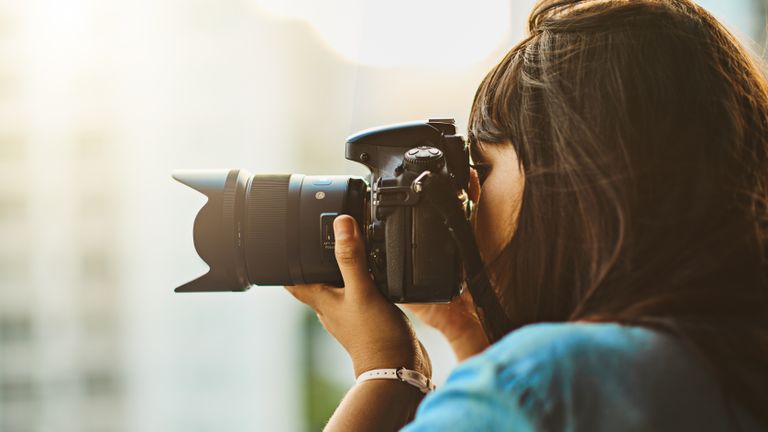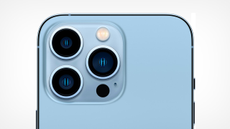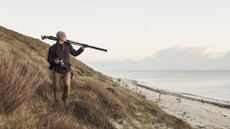Although new DSLR releases are becoming ever rarer in an age where mirrorless grabs all the headlines, they still make up a huge chunk of the market and are appealing to a huge variety of different types of photographers.
If you’re happy to forego the new technology found in the best mirrorless cameras, then you’ll find a DSLR market that is pretty healthy and offers a huge wealth of options for almost every type of photographer. The choice is immense, whether it’s your first “proper” camera or whether you’re a professional looking to take the next step and upgrade your gear.
That said, knowing what is the best DSLR is not necessarily that straightforward. Essentially it comes down to what type of photographer you are, and what your needs are when it comes to your camera equipment.
So, for example, if you’re pretty new to photography and are keen to get your hands on your first “real” camera (compared to a phone), opting for a professional-level DSLR is almost certainly going to be far too much for you - and will set you back a pretty penny. It makes sense to check out the best entry-level cameras, or perhaps even consider the best compact cameras and of course the best mirrorless cameras too.
On the other hand, perhaps you’re a few years into your photography journey already and have grown out of a basic model and think it’s time for an upgrade. Maybe you’re pro (or semi-pro) and need to upgrade something that does something your existing model doesn’t quite provide.
There are a couple of great all-rounder DSLR models that are good for tackling a wide range of different subjects and would suit a number of different customers pretty well. A perfect example is the Canon EOS 90D, which is an APS-C model that has some seriously impressive specs. For those with full-frame aspirations, the Nikon D780 (one of the most recent models on the list) is a great stepping stone between beginner and pro models.
Indeed, the Nikon D780 includes some of the mirrorless technology that can be found in some of Nikon’s more modern bodies, making it an excellent blend of traditional handling (which some prefer) and newer technologies. By the same token, the Canon EOS 90D uses a lot of the same specifications as its mirrorless cousin, the Canon EOS M6 Mark II (opens in new tab) - including the same high-resolution sensor.
Right now, the best DSLRs generally represent the best value-for-money when it comes to affordability. While they have older tech than many mirrorless cameras, you’re also not paying for tech that you don’t necessarily need. Beginners might want to take a look at the excellent value models such as the Canon EOS 250D (opens in new tab) and the Nikon D5600 - both of which are several years old but still represent a huge step-up from your smartphone.
How to buy the best DSLR
There’s a good reason why many photographers first “real” camera will be a DSLR. That’s still true in 2022 despite the fact that no new DSLR models have been released for some time. They offer everything you need to learn about photography and get you used to techniques such as using different lenses, shooting in manual and utilising raw format, and you might find that you don’t need some of the newer technologies that mirrorless provides.
For new photographers, good beginner options include the Canon EOS 850D (opens in new tab), which is the newest model on our list. If you want something a touch smaller, the Canon EOS 250D is a good option. If you prefer the Nikon brand, you’ve got the Nikon D5600 (opens in new tab) - though that can sometimes be a little hard to find (especially new) and is now starting to show its age somewhat.
Arguably, the best thing you can do for your photography is to skip the entry-level models and plump straight for a mid-range, buying a more expensive camera that will last longer in your photography journey. When you’re looking at DSLRs, and the bargains that they offer, that’s something that’s much easier to achieve in comparison to mirrorless shopping.
In the mid-range sector, we’ve got fantastic cameras like the Nikon D500 (opens in new tab) and the Canon EOS 90D. The Nikon has been around for a fair while now and as such can be picked up at excellent prices. The 90D is a little newer, but is also available at a great price.
One of the benefits of opting for DSLR over mirrorless is the sheer size of the ecosystem that they sit within. That means there’s a huge range of lenses and accessories that mirrorless options still don’t quite match. So, whatever kind of photography you’re into - or rather, whatever it is you like to photograph - you should be able to find something that meets your needs (and your budget) with a DSLR.
Full-frame DSLRs are no longer only for professionals with high-end budgets. You can now pick up cameras like the Nikon D780, which uses some of the technology from the mirrorless Nikon Z6 for a versatile all-rounder for those who prefer the build, style and handling of traditional cameras. If you prefer the Canon way of life, then there’s the Canon EOS 6D Mark IV to consider too.
At the top of the DSLR tree are the semi-pro and pro models. Again, it’s worth considering these even if you’re a mid-range type of photographer, as you might find some excellent deals compared to the highest range mirrorless options. For example, the Nikon D850 can be picked up for a great price compared to when it was first released, as can the Canon EOS 5D Mark IV (opens in new tab).
If you’ve got the deepest of deep pockets and want something truly astonishing, then you might also consider the Nikon D6 (opens in new tab) or the Canon EOS 1DX Mark IV, but they’re likely to be considered overkill for the average consumer.
The best DSLRs you can buy today:


The D780 is, in many ways, a Nikon Z6 (mirrorless) camera inside a traditional DSLR body. It’s clearly been designed for those who crave the traditional handling and feel of a DSLR camera, rather than flipping to mirrorless. If you’ve got a whole cabinet full of DSLR lenses too, you’re also more likely to crave a DSLR for your next model, too.
Here, we’ve got something very impressive. It uses the same sensor and processor as the Z6, but thanks to the larger body, we’ve got room for dual memory card slots and a lot more direct control dials and buttons. There are also nifty features like 4K video recording, charging via USB and 12fps shooting.
The D780 is a good whack more expensive than the Nikon Z6 with which it shares its technology, but it is cheaper than the Z6 II, the newer model. Either way, if you’ve got a bag full of DSLR lenses, you’ll be saving cash compared with swapping over a whole system.


In camera terms, the D850 might be getting on a bit, but it features a host of fantastic specs, available at a better price than ever. It’s a superb all-rounder which is well suited to professionals and advanced enthusiasts who want to photograph lots of different types of subjects.
Advanced enthusiasts will also get a kick out of how well it handles a variety of different subjects. With a high-resolution 45.4 megapixel sensor, 4K video capture, a 3.2-inch tilting touchscreen, a 153-point / 99 cross-type AF system that pretty much just nails it every time, and a sturdy body, you’re unlikely to be disappointed with what the D850 can deliver.


Although a couple of years old now, the 90D is still one of the newest models on our list, and despite its age, it’s still packing a lot of power for a mid-range offering and position in the market.
If you’re still very much interested in DSLR photography - if for example you already own an entry-level Canon model - this is the obvious step up choice for you. It’s also not a bad option for those looking to move up from some entry-level mirrorless cameras, too.
DSLRs still have mirrorless rivals beat when it comes to battery life, and the 90D gives you a whopping 1300 shots per charge, making it ideal for situations where you can’t stop to charge.
There’s also a host of other appealing features here, such as a super high-resolution 32.5-megapixel sensor, uncropped 4K video recording and an optical viewfinder that offers a 100% view of the scene.


One of the best APS-C DSLRs which is currently available on the market, this is an ideal all-rounder for those who shoot a little bit of everything.
It’s aimed primarily at advanced hobbyists, but it’s easily good enough to be used by professionals - especially as a second camera.
It’s best if you can buy the camera with the 16-80mm kit lens, which is so much more than just your average kit optic, offering a wide f/2.8-4 maximum aperture range and producing high-quality images.
It’s also available at a great price - compared to the launch price - so if you’ve been sitting on the fence when considering an upgrade, now could be a great time to go for it.


If you find yourself lusting after a D500, but don’t quite have the funds available, consider instead the D7500.
It shares many of the same specifications as its older brother, including the same sensor and processor combination but with a few compromises to help keep the price lower.
A chunky and nicely textured body makes the D7500 a nice camera to hold and use, with some modern touches like a fully articulating touch-screen to satisfy those used to smartphones and the like.
The trade-off for the lower price includes an autofocusing system that’s not quite on par with the D500, but still very good. You also don’t get the opportunity to shoot quite as fast, with 8fps available, but it’s still very useable for those who don’t shoot action every day.


There have been very few DSLRs announced in recent months and years, but the 850D is the answer for photographers who like a traditional way of shooting and are looking for their first “proper” camera.
Those looking for a strong set of new innovations won’t find that here, but you do get a solid set of specs, now with added 4K to get you started with.
You also get a strong battery life, an optical viewfinder (albeit on the small side), and a good vary-angle LCD screen. Most importantly, the 850D is capable of producing some lovely images.
If you’re not tied to a particular system, you might be better off going for one of the many mirrorless options out there, but if you’re convinced a DSLR is for you, the 850D is a solid starter option.


While you can probably find better mirrorless cameras than the 250D at its price point, if you’re keen to stick with a traditional DSLR, this is a good one to go for.
If you’re looking for your first “proper” camera, but don’t want to go too mahoosive, this also has the honour of being the world’s smallest DSLR (to feature an articulating screen). It’s still got a good range of dials and buttons, so it doesn’t feel too cramped though.
On the downside, the viewfinder - which is optical - only offers a 95% view of the scene, so you could find some subjects just edging a little out, while the 4K video recording is subject to a crop making it less than ideal for vloggers.
Still, if you’re mainly a photographer, this is a good choice to get you started.


The D5600 is an excellent option for your first DSLR, especially if your budget can stretch to investing in some additional lenses to go alongside the kit optic.
Being fitted with Nikon’s Snapbridge connectivity (a low-powered always-on Bluetooth connection) means that your shots will always be ready to share on social media platforms. If you’re stepping up from a smartphone it goes a long way to easing the transition from phone to “proper” camera.
Aside from bragging rights, you get a high-resolution 24-megapixel sensor, an articulating touch-sensitive screen and a 39-point AF system.


If your budget is tight and you want to get a body and lens set up for a fair price, then the Nikon D3500 is worth considering.
It’s pretty old now and it’s starting to show, but if you’re brand new to DSLR and just want something simple to grow and learn with it’s a decent option. One aspect which continues to impress is the long battery life - making it a good potential option for travel and long day trips.
Aside from that, you get a competently performing 24-megapixel APS-C sensor, a fixed 3-inch LCD screen and Full HD video. These are specifications that are pretty old hat now, but get the job done for the budget and class.


The 5D line of Canon professional cameras has long been respected and with good reason. The latest iteration of the successful model brings with it all the respected features of its predecessors, but builds on it to result in one seriously impressive model. It has a 30.4 megapixel sensor, and has a new innovation in the form of “Dual Pixel RAW” which allows you to shift the focus ever so slightly after you’ve taken the shot.
Ideal for weddings, portraits and commercial photography, the only let down of the 5D series is that it’s not particularly geared for action and high speed photography. For those type of photographers, take a look at the 1DX Mark IV - but be prepared to pay an extra premium for it.


For those who like to stick to a traditional way of shooting, the Canon 6D Mark II is an excellent first full-frame DSLR, and is currently available at a fantastic price.
You get a 26.2 megapixel full-frame sensor, a much-improved AF system (when compared to the original 6D) and an articulating touch-sensitive screen. There are some things which seem to be lacking for a modern camera, such as 4K video, but if you’re more into your stills than your movies, you may not be overly bothered by that.
This is not a particularly exciting model, but it performs well in a good range of situations and being compatible with a huge range of optics makes it a good choice for those firmly fixed on the idea of the DSLR.
Liked this?
- Best cheap full-frame camera
- Best travel camera
- Best action camera
- Best instant camera
- Best camera for kids
- Best camera backpack: protect your photography gear
- Best travel tripod: lightweight tripods ideal for travel











